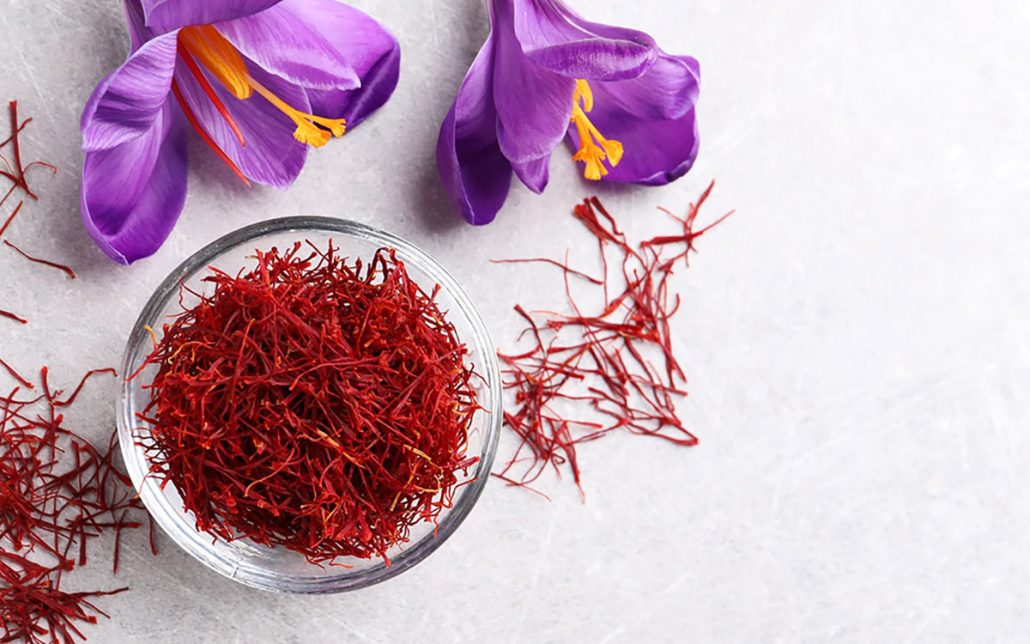
Saffron is known as the flower of health, the king of spices and red gold, the most valuable plant in Iran, and its main origin is the slopes of Alvand. The cultivation of saffron in Iran goes back to the years before Christ and is spread in areas with very little rain, which have cold winters and hot summers. Iran is the most important producer of saffron in the world. 95% of the country’s saffron is cultivated in South Khorasan Province and 5% in Yazd, Isfahan, Fars, Kerman and Central Provinces.
Saffron with its scientific name (Crocus sativus L) from the Iridaceae family is a perennial herb that flowers in early autumn. Saffron has a round, hard, fleshy and thick underground stem that is covered with brown fibrous skins, which farmers call onions. But in terms of botany, it is called tuber or worm. The number of flowers per stem is 1 to 4 and they grow in early November to December.
planting
Saffron is considered a cold resistant plant. The maximum cold that can be imposed for saffron is (-18) degrees Celsius. Since the main part of the saffron plant’s growth, i.e. the flower, develops in the soil. Soil temperature is more important than air temperature for the growth of saffron plant. Because the amount of short-term fluctuations of the soil is less than the air. As a result, the soil gets cold earlier than the air in the fall and warms up later than the air in the spring. Also, the temperature fluctuations on the soil surface are more than the soil depth. Therefore, it is recommended to plant tubers at a depth of 15 cm or more in order to prevent yield reduction and less penetration of light into the soil.
had
It has been reported that the water requirement of saffron is about 3000 cubic meters per hectare. The growth of saffron begins with the irrigation of the field and the first stage of growth is the beginning of flowering. In areas where there is a large area under cultivation and a shortage of laborers, it is recommended to divide the irrigation between plots with a few days of each other, so that the saffron harvest does not face problems, so that the flowering of the plots does not coincide at the peak. Therefore, the first irrigation of saffron is done when the surface of the field is empty of plants. The first irrigation is done from the middle of October to the first decade of November, but if the weather is hotter, the irrigation starts later, and if the cold is early, the saffron field is irrigated in the beginning of October.
After doing the first irrigation, first the flowers and then the leaves will appear in the field. But if the weather is hot, saffron grows vegetatively and produces leaves, and less flowering is done, and as a result, it will reduce the yield in the field, and it will be difficult to harvest the flowers while the leaves grow.
harvest
Harvesting saffron includes picking the flower and separating the stigma from other parts of the flower. The life of the flowers is 3 to 4 days and if they are not harvested on time, they will die. And if the flowers are exposed to hot air, wind and sunlight for a long time, the quality of its color and fragrance will decrease and the quality of saffron will decrease. Therefore, the time of harvesting flowers is very important.The flowering period of the saffron farm is usually 15 to 25 days, the amount of flowers increases from the seventh to the tenth day, the harvesting time varies depending on the climatic conditions and the time of the first irrigation, and the collection of flowers is done in the early morning and before sunrise and sometimes in the evening. In order to reduce the cost of picking flowers, Chinese flowers are usually picked every other day in the first days, and flower picking is done every day and sometimes 2 times a day (mornings and evenings).